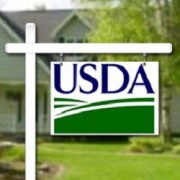Understanding USDA Income Limits
It is possible to make MORE than the USDA Household Income Limits
So you have just learned about the benefits of a USDA loan and you get excited about being able to come to closing with no money down. BUT then you start looking at the household income limits for your county and realize you make a little too much money for USDA! Well, there are some little known tricks for actually exceeding your county household income limit so let’s see how we can get you into a home with no money down.
USDA Rural Development Guaranteed Housing Income Limits
Before we learn the tricks for exceeding the income limits, let’s discuss how the limits work. Besides qualifying based on debt to income ratios, credit scores, appraisal, and assets, USDA has a “household income limit” for each U.S. county. So in order for a buyer to use this program, the total income for the household must be under the home’s county income limit. Notice that I said “household” and not borrowers. This means that all income for people 18 and over which will live in the house, must be included and documented in the calculation unless there are exceptions mentioned below. Unborn children are not counted in these calculations. Each county has a 1 – 4 person income limit and a 5 or more person income limit which is higher.
Example: Let’s say a couple is purchasing a house in New Hanover County NC and the two borrowers have combined salaries of $70,000 and there will be a total of 4 people living in the new home. The other two people living in the home will be a borrower’s parents. This is important because we have other adults in the household we need to count the income and the parents make a combined $25,000 per year. In this case we have a total of $95,000 in household income but the income limit for New Hanover County is $75,650. So these buyers may not use USDA even though they are under the income limit because it is the household that is important. That is unless they qualify for some of the allowed deductions to get their income under the limit. Let’s explore these tricks
[av_button_big label=’Find Your County USDA Income Limits’ description_pos=’below’ link=’manually,http://eligibility.sc.egov.usda.gov/eligibility/incomeEligibilityAction.do?pageAction=state&NavKey=income@11′ link_target=’_blank’ icon_select=’no’ icon=’ue800′ font=’entypo-fontello’ custom_font=’#ffffff’ color=’theme-color’ custom_bg=’#444444′ color_hover=’theme-color-subtle’ custom_bg_hover=’#444444′][/av_button_big]
Trick #1 for Exceeding the USDA Household Income Limit
So you know that USDA cares about how many people will live in the new home and their ages. The ages of the occupants is not only important for including income but it is also important for lowering your income! Wait, why would you want to lower your income? Keep in mind that we are not lowering your qualifying income, but we are just lowering your income compared to the maximums allowed. So these are two different things. For each child under 18 that will live in the house, we can lower the total household income by $480 per child. So if there are 3 children under 18 living in the home, we can lower the household income by $1440 ($480 x 3).
How to Lower Household Income with Children Example: A buyer is purchasing a home in  Brunswick County NC and wants to use a USDA loan. The buyer has 3 children under 18 that will live in the house and no one else will live there. The buyer makes $76,500 salary per year and the Brunswick County income limit for a family of 4 is currently $75,650. She is over the limit. So we multiply $480 times the 3 children to get $1440 and subtract that from the borrower’s income to get $75,060. Now the buyer makes under the income limit and may proceed with the next steps in qualifying for a USDA loan.
Brunswick County NC and wants to use a USDA loan. The buyer has 3 children under 18 that will live in the house and no one else will live there. The buyer makes $76,500 salary per year and the Brunswick County income limit for a family of 4 is currently $75,650. She is over the limit. So we multiply $480 times the 3 children to get $1440 and subtract that from the borrower’s income to get $75,060. Now the buyer makes under the income limit and may proceed with the next steps in qualifying for a USDA loan.
Trick #2 – How to Drastically Reduce Your Income Under the Income Limit
The least known but the biggest option for lowering your income compared to the household income limits is how much is paid for childcare. If a borrower pays childcare and can document the expense by tax returns, documentation from the childcare provider, receipts, or cancelled checks, then we may be able to reduce the household’s income by the annual amount paid. This can be huge for a family to be able to drop their income under the limit and get 100% financing! Child support payments or private school tuition (kindergarten through 12 years old) paid by the applicant are not eligible expenses to reduce the income.
 How to Lower Household Income by Childcare Expenses Example: Let’s assume that two buyers make $130,000 in the Raleigh, Wake County NC area, have 5 total in the family which includes 3 children under 18, and pay $10,000 per year in childcare expenses. Looking at the Wake County income limit for a family of 5 or more, we see that the limit is $121,250 so we are over the limit. Now let’s fix this!
How to Lower Household Income by Childcare Expenses Example: Let’s assume that two buyers make $130,000 in the Raleigh, Wake County NC area, have 5 total in the family which includes 3 children under 18, and pay $10,000 per year in childcare expenses. Looking at the Wake County income limit for a family of 5 or more, we see that the limit is $121,250 so we are over the limit. Now let’s fix this!
$130,000 household income – $1440 for 3 children – $10,000 for documented childcare expenses = $118,560. So we were originally over the $121,250 income limit and now we are under it. We can now proceed with reviewing the borrower’s documentation for a USDA loan!
Trick #3 to Exceed the USDA Household Income Limit
What if you have children in the household that are 18 but are in school? Then if you can get documentation from the school proving the child is enrolled full time, then you may be able to claim the $480 per child deduction of income. Remember how the $480 per child calculation works above.
Trick # 4 to Make More Money Than the USDA Income Limit
This option requires more work and documentation to prove but we have seen borrowers that have used this rule in the past to qualify for a USDA loan. This deduction to income can be allowed for disability expenses incurred. USDA Form RD1944-4 must be completed to verify a disability or other evidence that supports a member of the household has a disability. Other evidence can include medical bills, invoices, or others but it cannot be reimbursed or paid by insurance. Expenses can even include reasonable expenses related to the care of household members that allow another household member to work. This section can be rather detailed so rather than go through all of the details, just know that this could help a buyer and to contact our team for more.
Trick #5 to Lower Your Income Under the USDA Income Limits
If you have an elderly or disabled household, then you could possibly reduce the household income by documenting the medical expenses anticipated to be incurred over the ensuing 12 months. But only the portion over 3% of the annual income may be counted and it cannot be paid by insurance or Medicare. Examples of these expenses could be doctors, dentists, hospitals, therapists, prescriptions, and others.
There are even other rarely used ways to help a family buy a home using a USDA loan, so let us see if you can use this awesome mortgage or if you qualify for other low to no down payment loans.
[av_button_big label=’Look Up USDA Eligible Homes or Areas ‘ description_pos=’below’ link=’manually,http://eligibility.sc.egov.usda.gov/eligibility/welcomeAction.do?pageAction=sfp&NavKey=property@11′ link_target=’_blank’ icon_select=’no’ icon=’ue800′ font=’entypo-fontello’ custom_font=’#ffffff’ color=’theme-color’ custom_bg=’#444444′ color_hover=’theme-color-subtle’ custom_bg_hover=’#444444′][/av_button_big]
Remember to Consider Using a USDA Guaranteed Home Loan to Buy Your Home
- Do not need to be a first time buyer
- Can own another property over 1 hour away
- May finance closing costs over the purchase price if appraised for more
- Flexible on credit
- Seller can pay up to 6% of the price in closing costs
Related Resources:
- USDA relaxes guidelines for no money down buyers
- Step by step instructions for locating USDA eligible homes
- Refinance your USDA loan without an appraisal
[av_button_big label=’Ask us Your USDA Questions ‘ description_pos=’below’ link=’manually,http://teammovemortgage.com/contact-us/’ link_target=’_blank’ icon_select=’no’ icon=’ue800′ font=’entypo-fontello’ custom_font=’#ffffff’ color=’theme-color’ custom_bg=’#444444′ color_hover=’theme-color-subtle’ custom_bg_hover=’#444444′][/av_button_big]